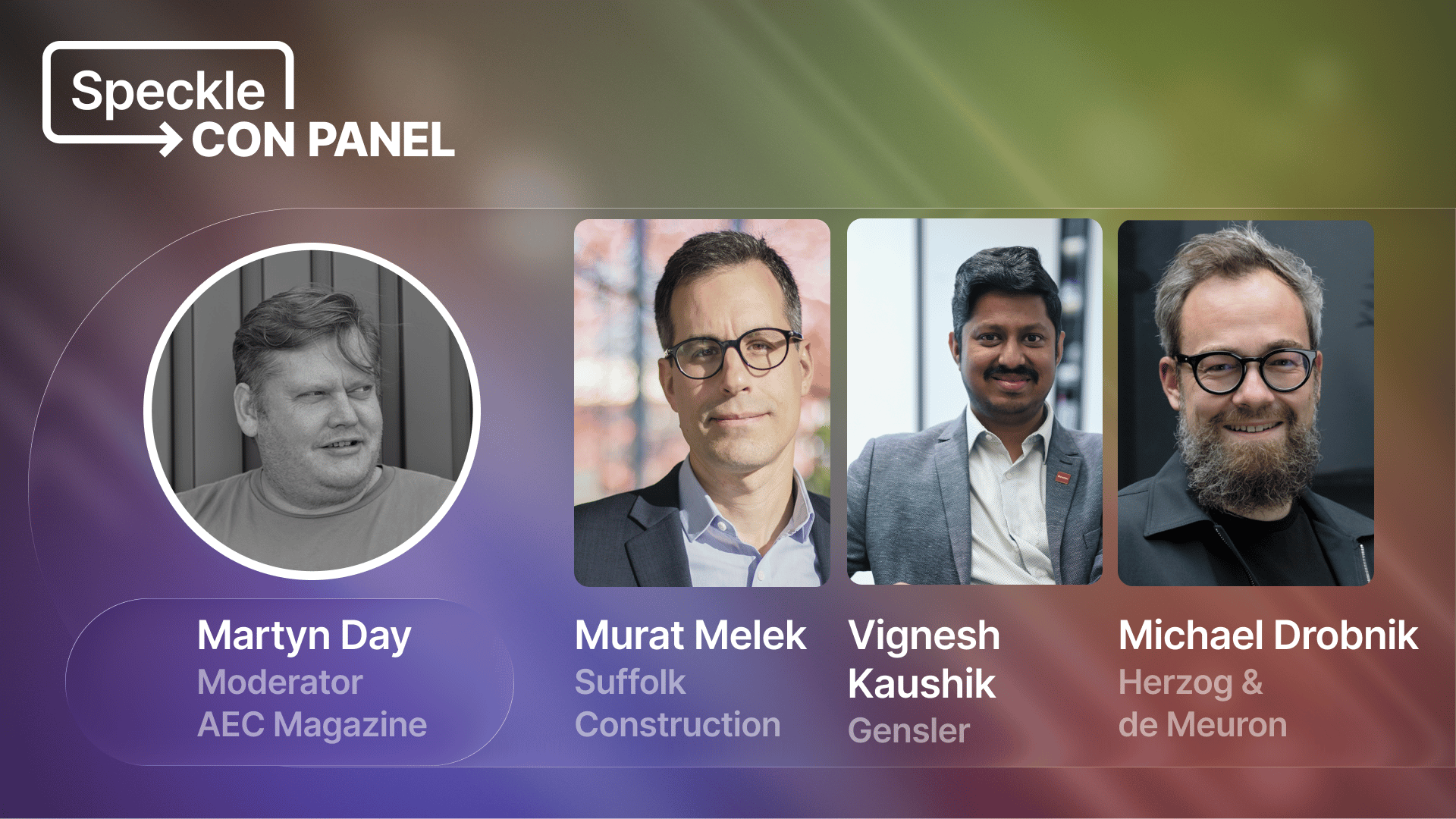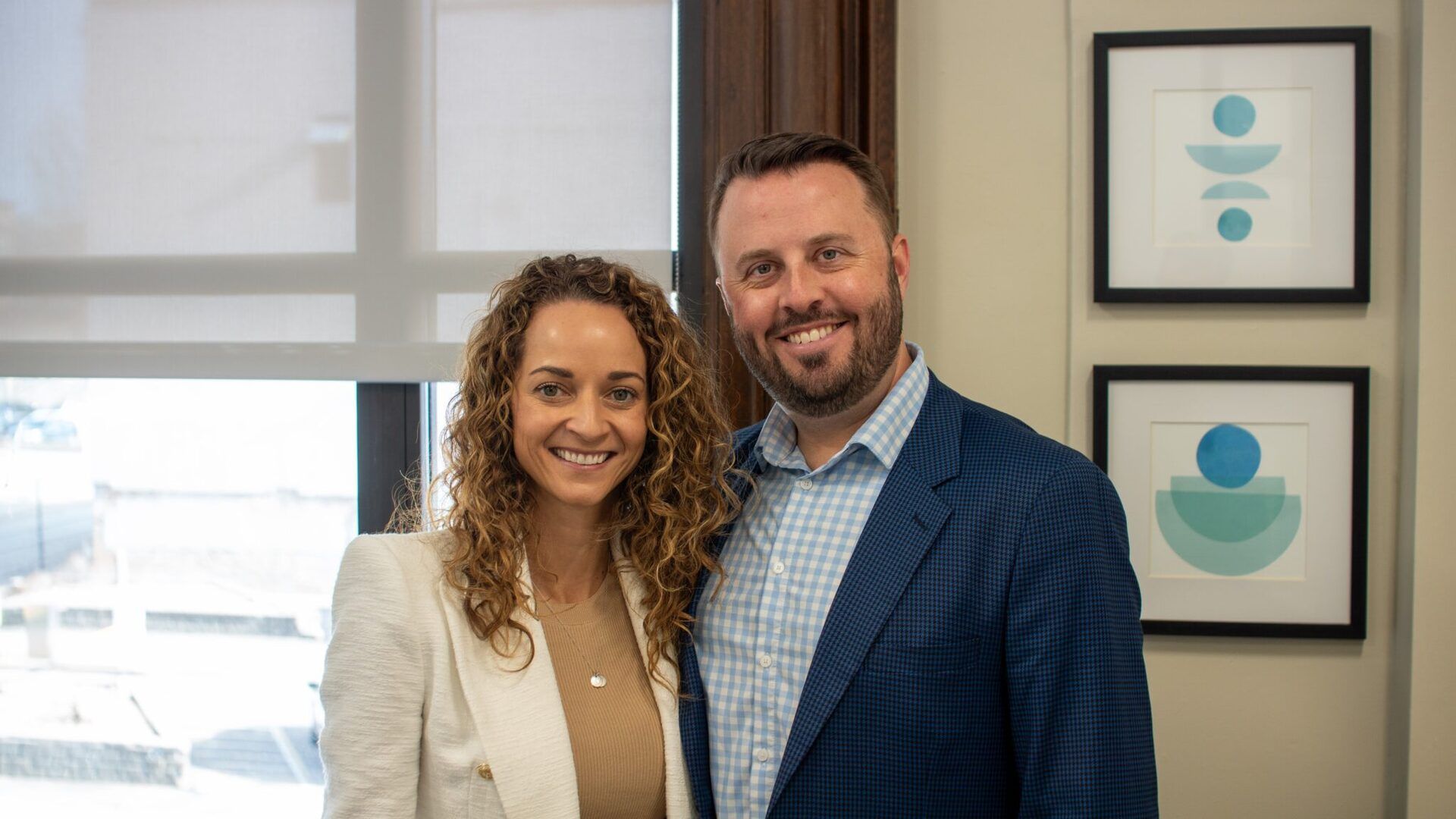Want to get your message in front of {{active_subscriber_count}} highly engaged innovation leaders? Check out our sponsorship offers.
UPCOMING
Bricks & Bytes LIVE at SpeckleCon 2025 - Meet the Panel Speakers

Vignesh Kaushik - The Regional Director of Design Technology at Gensler for the Asia Pacific, Middle East, and Greater China regions. Vignesh also runs the blog platform “Thank God It’s Computational (TGIC),” with a mission to help accelerate the adoption of leading technologies among professionals in AEC companies.
Murat Melek - As the Director of Artificial Intelligence, Murat leverages his expertise in data science and design to drive innovation in the construction sector. With over 20 years of experience in the AEC industry, Murat holds a Ph.D. in Structural Engineering from UCLA and a Master's in Data Science from UC Berkeley.
Michael Drobnik - As the Lead of Design Technologies and an HdM Associate, Michael leads a multidisciplinary and global team that supports architectural projects with digital methods and tools, ranging from BIM, Computational Design, Visuals, and Animations to the Analogue/Digital Workshop
Join us at Speckle’s flagship conference - SpeckleCon 2025 - on 7th November to see our very special live-stream.
Read more here.
And use our discount code “BRICKSBYTES” for 10% off your ticket.
INDUSTRY INSIGHTS
5 Uncommon Lessons From Second-Time Founders
The Problem Nobody Talks About
Construction tech is exploding. Billions in funding. Thousands of founders. New companies launching every month.
But here's what most first-time founders don't realize: eighty percent of them are building for the wrong customer, solving the wrong problem, or using the wrong strategy to get there.
They build features when they should build moats. They obsess over the product when they should obsess over distribution. They optimize for growth when they should optimize for understanding. And they make decisions that feel logical at the time but extract massive hidden costs later.
But there's a pattern among founders who've been through it before. They think differently.
Not because they're smarter. Not because they have more capital. But because they've paid the price for learning what actually matters.
Six builders who've exited and launched again offer a perspective most founders don't have yet.
Here's what distinguishes them on the second attempt.

After a win, credibility compounds, but only if used to build differently. Credit: Unsplash
TL;DR
Most first-time founders build for validation. Second-time founders build for leverage, legacy, and life.
Here’s what changes the second time around:
You build leverage, not just product. Focus shifts from features to moats, from extraction to enablement.
You play to your strengths. Know where your real leverage lies (tech, market, or distribution) and partner for the rest.
You value discernment over hustle. Wisdom is knowing when to walk away, not just push harder.
You build for who you want to become. Legacy, sustainability, and people’s outcomes replace speed and valuation as north stars.
The best second-time founders don’t get softer. They get clearer about what actually matters, and what it really costs to win.
The First Time You Build a Product. The Second Time You Build Leverage.
First-time founders optimize for building a product that works, raising capital, and proving something works in the market.
What changes is subtle but profound. Something shifts in how success gets redefined.
The Philosophy Shift
Success metrics alone don't determine how you build. A business with 140% net retention, with customers expanding by 40% annually on average, looks like a scaling victory. But metrics aren't destiny.
Some founders reach that inflection point and ask a different question: What do I actually want to optimize for?
"I think a lot more about my legacy today than I probably did when I was younger. I've only got probably 20 more years of mattering in this business."
This represents a fundamental shift. Legacy changes everything about how you operate. When you care about legacy, you make different product decisions. You don't extract value from customers. You enable them. You don't chase every feature request. You obsess over core value. You don't hire recklessly. You build culture that compounds.
Britton Langdon built M-Suite to 140% NRR. On the second attempt with BuildFactory, he's embedding different constraints from day one. Same discipline. Different North Star.
Building For Enablement, Not Extraction
But there's a different approach: pricing tied to value created, unlimited access, enablement-first philosophy. This starts with a principle: how you treat people matters more than how much you can charge them.
"First time I must admit not so nice of a person to work with or work for. I've gone through my own growth curve and growth journey."
This shift from extraction to enablement happens between attempts. The best founders realize that the product decision (unlimited users) comes after the philosophy decision (enable, don't extract). Most founders reverse that order.
Nitin Bhandari redesigned Planera's pricing model around this principle. Unlimited users. Value-based pricing. A clear statement of intent: we're not squeezing customers, we're growing with them.
Understanding Where Your Actual Leverage Lives
Founders often think they need to be excellent at everything: product, market understanding, and distribution all at once. That's not how it works.
You have to choose your starting level. Technology expertise matters. Market understanding matters. Distribution relationships matter. But you can't build all three from scratch simultaneously.
The smarter play: identify where your actual advantage lies and start there. Find partners for the rest.
Maksim Markevich learned this expensively at Kreo Software. Built exceptional technology. Didn't understand the market. Had no distribution relationships. By the time he started Sunbeam and PVFARM, the strategy shifted: begin with partners who know the industry. They bring expertise and relationships. You bring the solution.
"Understanding of the market, of the problems, of the value chain is crucial. It is way more crucial than technology itself."
This matters because many first-time founders think building is about being brilliant at everything. Second-time builders know it's about being honest about where leverage actually lives.
Credibility as Acceleration
After a successful exit, something changes. Your network activates differently. Recruiting becomes easier. Customer conversations move faster. Investors take calls.
But here's what matters: don't replay what worked before. Use credibility as a foundation to go somewhere new.
The difference between yesterday's success and tomorrow's opportunity is critical. If you try to repeat what worked, you're building nostalgia. If you use it to solve a different problem in a different way, you're building leverage.
The Cost Nobody Calculates
Every founder optimizes for something. Most optimize for growth, revenue, or scale because that's what the scoreboard displays.
But what happens when you zoom out? What do you see in the lives of your team? In your own health? In the decisions you made that felt justified at the time but extracted a price you didn't anticipate?
Second-time founders know this price because they've felt it.
The Body Keeps Track
Running unsustainably isn't romantic. It's not a badge of honor. It leaves traces.
"I actually got A-fib in my heart, like irregular heartbeats. I actually had to have my heart stopped and restarted."
Subscribe to our premium content to read the rest.
This is a subscriber only post. Become a paying subscriber of our annual or monthly paid subscriptions to get inside takes on growth in construction tech.
Upgrade

